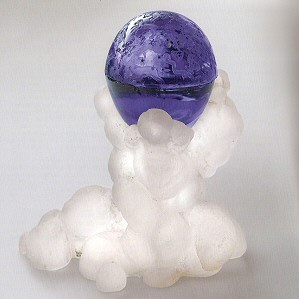“The majority of Fabergé Imperial Easter eggs derive their forms from work of arts dating from the 16th to 19th centuries. Most of the prototypes for the eggs have been identified.” Kieran McCarthy of Wartski, London, has discovered another prototype in the Wallace Collection, a national museum in an historic London town house. Our thanks goes to Kieran for sharing The Aesthetic Ancestry of the Constellation Egg by Fabergé with readers of the Fabergé Research Newsletter.
Additional interesting resources include the article by Tatiana N. Muntian and Marianna B. Chistyakova in Apollo, January 2003, 10-13, and a follow-up on the Egg on Mieks Fabergé Eggs – Blue Tsesarevich Constellation Egg.

(Muntian, T. N. Fabergé Easter Gifts, 2003)
(Updates are posted in Exhibitions on the Fabergé Research Site)
From Peter the Great to Nicholas II: The Art and Culture of the Russian Empire includes the Fabergé miniature royal regalia and the throne of Nicholas II from the State Hermitage Museum Collection.
A recent flood of Fabergé made in modern Bulgaria has been on the market, especially on the internet. Caveat emptor or buyer beware!
Russian Antique Silver – Hallmarks of Silversmiths – Russian Maker’s Marks is a very comprehensive website for serious researchers on the topics covered. (Courtesy of Lars Ohlander)
Readers of this newsletter are invited to share information about Fabergé happenings worldwide.
